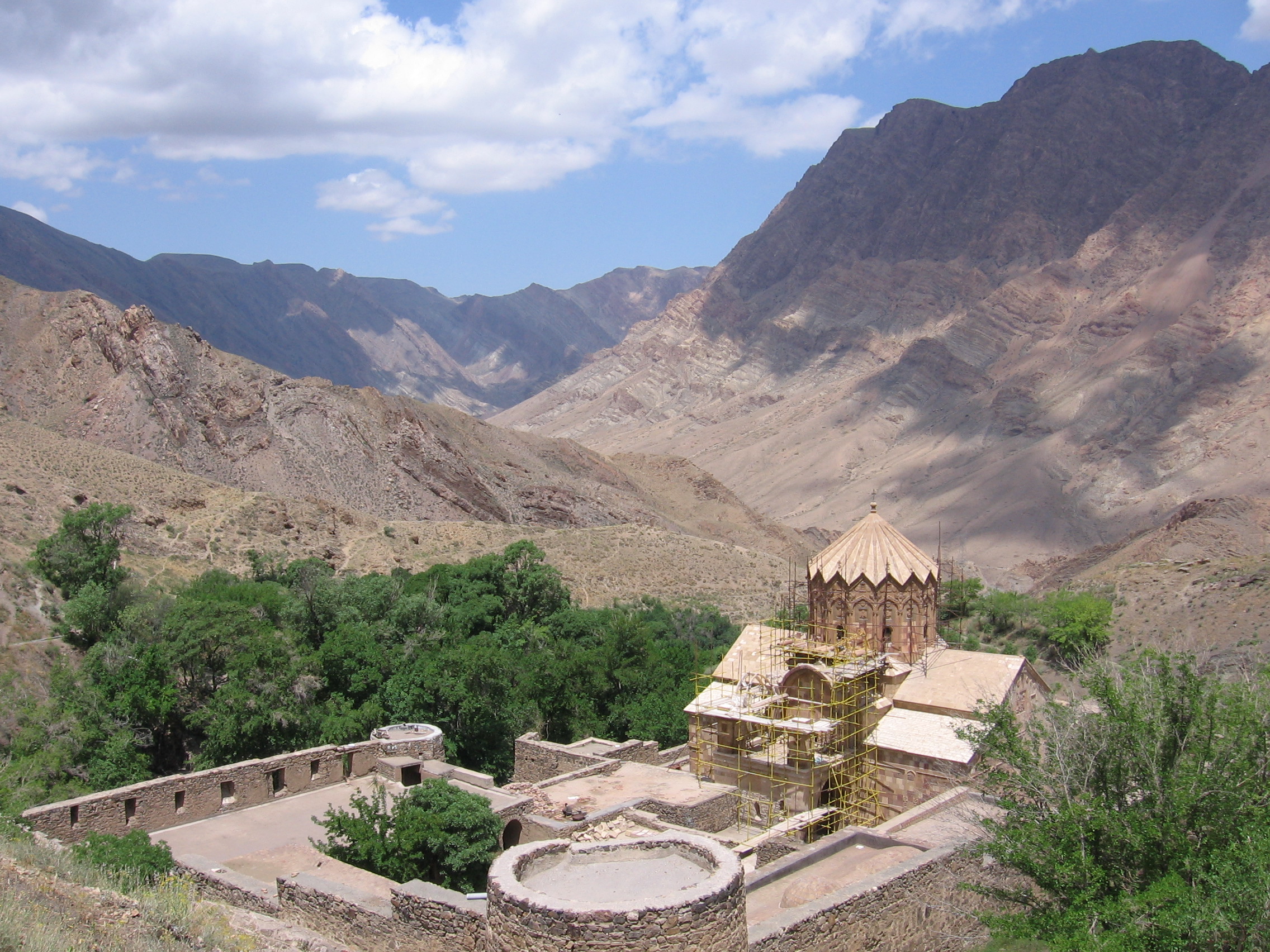- Jolfa
Infobox Settlement
official_name = PAGENAME
native_name =
imagesize =
image_caption =
image_
map_caption =
pushpin_
pushpin_label_position =bottom
pushpin_mapsize = 300
pushpin_map_caption =Location in Iran
subdivision_type = Country
subdivision_type1 = Province
subdivision_name =
subdivision_name1 =East Azarbaijan Province
subdivision_type2 =
subdivision_name2 =
established_title =
established_date =
government_type =
leader_title =
leader_name =
area_magnitude =
area_total_sq_mi =
area_total_km2 =
area_land_sq_mi =
area_land_km2 =
area_urban_sq_mi =
area_urban_km2 =
area_metro_km2 =
area_metro_sq_mi =
population_as_of=2005
population_footnotes =
population_total =56,000
population_urban =
population_metro =
population_density_sq_mi =
population_density_km2 =
timezone =
utc_offset =
timezone_DST =
utc_offset_DST =
latd=38|latm=56|lats=|latNS=N
longd=45|longm=38|longs=|longEW=E
elevation_footnotes=
elevation_m =
elevation_ft =
postal_code_type =
postal_code =
area_code =
website =
footnotes =Jolfa is a small town located in North of
Tabriz , in the province ofEast Azarbaijan Province ,Iran and is home to approximately 56,000 people living on 35 kilometers of urban and rural areas. Some 18,000 students study in the regional schools and 450 students attend the universities from all over the country. The employed population of the city work in service, administrative, transport, customs, banks and insurance as well as in other trade and urban activities. The majority of the rural population are farmers. With the increasing level of education and the popularity of mechanical agriculture, there are increasing numbers of young, qualified people entering the work force.Facilities and business
Jolfa is one of the most important border towns of the
Islamic Republic of Iran . Customs facilities in the city and theCaucasus -Jolfarailway have been designed to accommodate custom duties, warehousing, cargo releasing and transportation of three million tons of commodities per year. Prior to the collapse of theSoviet Union , all imports and exports of Iran with theUSSR ,Eastern Europe andScandinavia were primarily carried out through Jolfa.Cargo
During the year
1990 and1991 the volume of cargo exchanges through the Jolfa border amounted to 2.69 and 2.37 million tons respectively, forming over 10 percent of the country's imports. Upon closing theCaucasus -Jolfa railway due to the dispute over the region ofNagorno-Karabakh betweenArmenia andAzarbaijan , cargo exchnages through this border dropped sharply. However, in recent years, an annual average of 150,000 tons of cargo have been cleared from Jolfa border toTurkey , Azarbaijan republic, andNakhichevan , Armenia and vice versa through the main roads of Jolfa. Upon the cessation of hostilities and continuation of settlement talks, as well as with the opening of the IranCaucasus railway, it is expected that the border town of Jolfa will revive its past significance to be not only one of the most important cargo exchange borders among Iran, the Caucasus andRussia , but will also become one of the greatest cargo transit routes from Persian Gulf andCentral Asia to Caucasus,Russia and vice versa.Monuments
*
Saint Stepanous Cathedral
* Jolfa damaged water mill (a beautiful water fall)External links
* [http://yanajor.blogfa.com/post-350.aspx Pictures of Jolfa]
Wikimedia Foundation. 2010.

